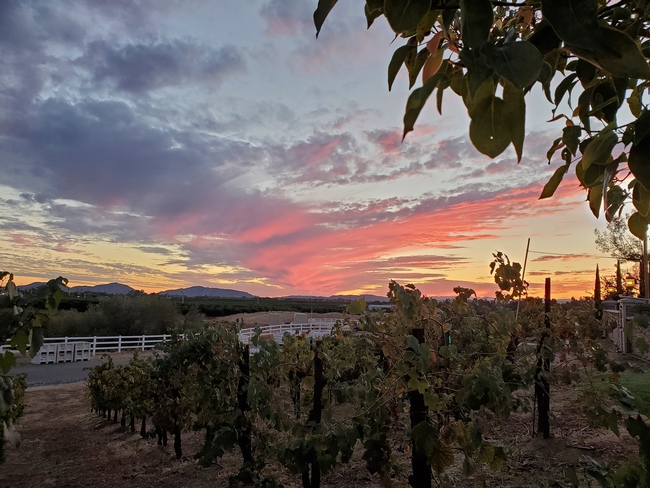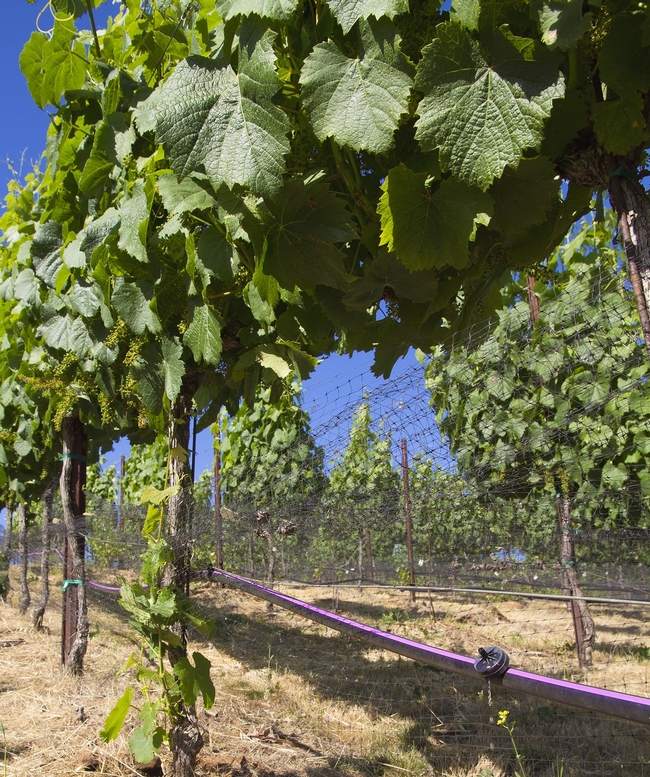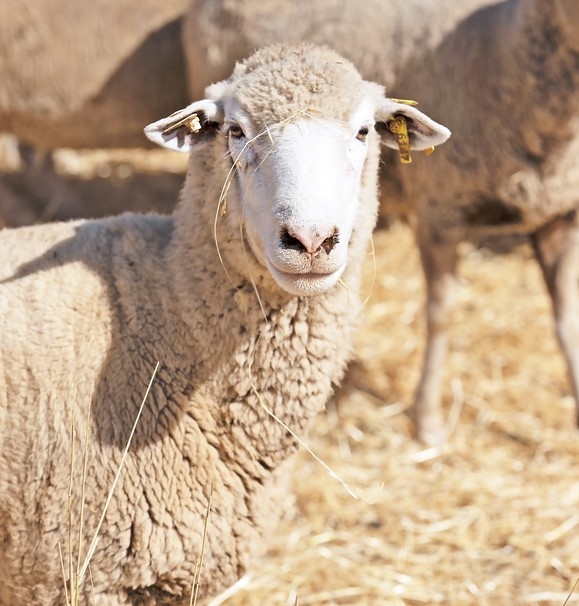Posts Tagged: biocontrol
Suppliers, retailers warn California grape growers of herbicide shortages
Supply-chain crisis forces some to pivot to mechanical, biocontrol measures
Driving through her vineyards on a chilly morning in December, Hortencia Alvarado is taking comfort – for now – that the weeds she sees are all yellow. But there remains a nagging worry that, like the pesky plants, is merely lying dormant for the season.
When March rolls around, and the first signs of new green growth appear on the vines, Alvarado and other vineyard managers will again have to confront the ongoing shockwaves of the global supply-chain crisis.
Growers of grapes – the third-highest valued agricultural commodity in California at $4.48 billion in 2020 – likely won't be able to access the herbicides that they usually apply.
“I definitely need to start thinking and considering it because I don't want to be in that situation where I don't have [the herbicide] when I need it,” said Alvarado, a vineyard manager in the San Joaquin Valley.
Imperfect alternatives
She first noticed the effects of the shortages this past August, during the application following the harvest of early varietals. Alvarado's agricultural pest control adviser had recommended a different product, instead of their usual standby, Rely – because none of the handful of suppliers in California could find it.
Then Alvarado's foreman started reporting that the substitute wasn't controlling the weeds.
“We were using some other stuff that wasn't as good, so basically we were wasting money on stuff that wasn't doing what we wanted it to do,” Alvarado explained.
The need for more machines or labor is just one result of the herbicide shortage, said George Zhuang, University of California Cooperative Extension viticulture farm advisor in Fresno County. Zhuang has received “a lot” of calls from growers about the chemical supply issues, which are also affecting fertilizers. He's been urging them to move away from traditional herbicides to mechanical means or biocontrol such as sheep or fowl – even though they might be more expensive.
Zhuang estimates that while a weed program comprises 5% to 10% of total production costs in a normal year with the usual herbicides, the use of nonchemical alternatives could hike that percentage up to 10% to 20%. In addition to their impact on the bottom line, effective herbicides are especially crucial to grape growers because vines – unlike tree crops – cannot naturally shade out weeds with expansive canopies.
“Right now, people can still scramble around and find some limited chemicals to make sure the crop is successful for the harvest, but if the situation goes for another year, I think there's going to be a panic in farming communities,” Zhuang said.
Herbicide challenges expected to linger
Unfortunately, the availability of certain products is likely going to be “challenged” into at least the middle of 2022, according to Andy Biancardi, a Salinas-based sales manager at Wilbur-Ellis, an international marketer and distributor of agricultural products and chemicals. Biancardi said that the suppliers he talks to are advising people to make preparations.
The supply of glyphosate, the key component in products such as RoundUp (used by many Midwestern farmers), appears to be most affected, Biancardi said. As a result, that shortage has put the squeeze on alternatives such as glufosinate, used in products like Rely – the herbicide favored by many California grape growers.
“The cost of glufosinate has definitely gone up because there just isn't enough, so everyone is obviously marking it up,” said Biancardi, who estimates that prices for both glyphosate and glufosinate are up 25% to 30% for growers.
Alvarado said that while large commercial operations are able to pay the premium prices or shift to other weed control measures, some smaller growers have essentially given up the fight – simply letting the weeds take over.
“They're just letting it go wild until the dormant season,” she said. “They're hoping that – by when they do start to spray [around March] – they'll hopefully have that Rely.”
Silver lining to supply crisis?
Large-scale growers and retailers are buying up those scarcer products when they can, in anticipation of future shortages during critical times. Biancardi said that while his company traditionally runs inventories down at the end of the season, they are instead stocking up on herbicides that customers will demand.
“Careful planning and forecasting is going to be more important than ever, that's really the key,” he said. “At this point we can't guarantee ‘business as usual,' based on what we're hearing.”
Shaking off old habits might actually bring some benefits to business, according to Alvarado, as a forced shift away from chemicals could prove to be a selling point for customers, from a sustainability and marketing standpoint.
“Out of this shortage, there might be some good, some wins,” she said, “but at the same time, we're going to need some answers – I think it's going to be a bumpy road.”
Calling the confluence of drought, record heat and a shortage of chemicals a “perfect storm,” Zhuang said that consumers could start feeling those jolts as well.
“Eventually, somebody is going to eat the costs – either the farming community or the consumer is going to eat the cost, I hate to say it,” he said.
Sesame seed-size insect is victimizing trees in Southern California
The polyphagous shot hole borer is taking up residence in California trees from San Diego to Santa Monica and as far east as Riverside County, drilling circular tunnels and spreading fungal spores that kill trees from the inside out, reported Amina Kahn in the Los Angeles Times Science Blog.
Akif Eskalen, UC Cooperative Extension plant pathology specialist at UC Riverside, wants to contain this invasive bug before it spreads throughout Southern California.
"If we can't control them," Eskalen said, "they are going to wipe out all our trees."
Box elders, sycamores, American sweetgum, maple and coast live oaks are susceptible to polyphagous shot hole borer attack. In urban and suburban areas, the dead and dying trees can pose fire and limb falling dangers. In the agricultural sector, avocado trees could face huge financial losses. In the fight against the pest, the California Avocado Commission has provided Eskalen $800,000 to broaden his investigation into this mysterious species of ambrosia beetle.
In March, Eskalen and his colleagues - UC Riverside entomologist Richard Stouthamer and Huntington Library curator of woody collections Tim Thibault - spent two weeks in Vietnam, where PSHB originates, searching forests and fields for natural enemies of the fungus spread by the pest. They collected a host of possible allies, whose DNA is now being analyzed in the lab.
"I am very hopeful that we are going to find some solutions to control this fungus," Eskalen said. "We have to."
Invasive meltdown
Ants can be a huge nuisance in and outside our homes, particularly if you have food lying around. But now, it turns out, they’re unwelcome, too, on citrus trees.
A year ago, UC Riverside entomologists released Tamarixia, a parasitoid wasp and natural enemy of the Asian citrus psyllid (ACP) imported from Pakistan, into a biocontrol grove in Riverside, Calif. Tamarixia can serve as an excellent biocontrol agent against ACP, a citrus pest first detected in 2008 in Southern California that is capable of spreading citrus greening disease, or Huanglongbing.
Tamarixia’s success starts with a female laying an egg on the underbelly of an ACP nymph. When the egg hatches, the parasitoid larva will scrape away the nymph’s belly, carving out a hole to push through to enter the nymph’s body. Feeding on the contents, the larva eventually excavates the entire nymph, leaving only a shell or husk of the nymph behind.
Female Tamarixia can kill psyllids also by “host-feeding.” They use their ovipositors as daggers to stab psyllid nymphs numerous times until the nymphs start to bleed. As bodily fluids ooze out of the nymph, Tamarixia sucks up this rich protein needed for developing more eggs.
An excellent way then to control ACP populations! Yes, but only until the ants come marching in. Argentine ants are threatening to disrupt the biocontrol of ACP by battling it out with Tamarixia on citrus branches. While not quite a Vader-Skywalker lightsaber duel on a precarious walkway, an “invasive meltdown” begins when the ants gang up to protect the nymphs.
“ACP nymphs produce a white, sugary waste product called honeydew, a good carbohydrate source for the ants,” explains Mark Hoddle, the director of the Center for Invasive Species Research at UC Riverside, whose research team has released Tamarixia into several Southern California citrus groves. “The ants, therefore, will protect the nymphs from Tamarixia. We have seen ants chase female Tamarixia off the psyllids, and even catch and eat them!”
“If you kill off the ants, Tamarixia can play the role of the biocontrol agent it was cast to do on citrus trees,” Hoddle says. “We’re seeing that the ants are impacting Tamarixia in two ways: they are preventing Tamarixia’s establishment in some areas; and, where Tamarixia is already established, the ants are not allowing these parasitoids to reach their full biocontrol potential.”






